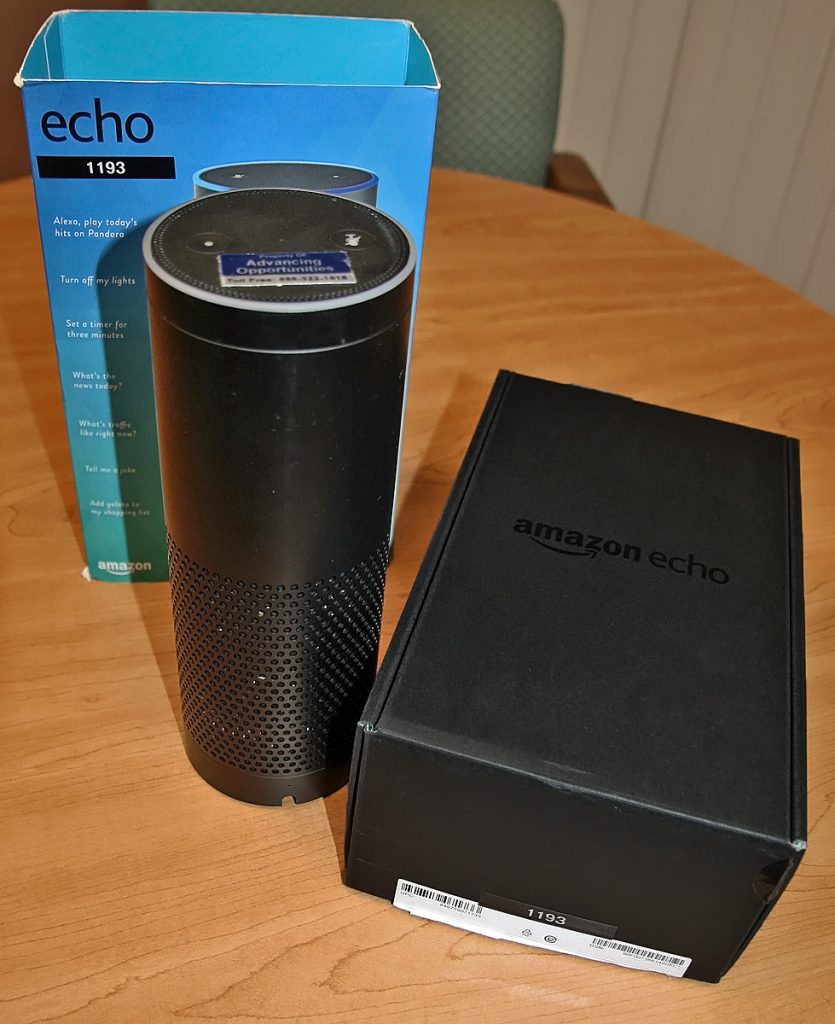
Although the Amazon Echo is marketed to the general public, its hands-free voice-recognition capabilities make it an important assistive technology device for people with physical disabilities.
It plays music, turns on the lights, announce weather forecasts, call for an Uber ride, and order a pizza. The Amazon Echo can also fill the room with rich sound, playing one’s favorite music via such sources as iHeartRadio, Spotify, Pandora, Prime Music, and TuneIn. What’s more, Alexa, the friendly voice behind Echo can even tell a joke. Without doubt, the Amazon Echo can do many fun and useful things, making the device a highly popular addition at many homes. Less well known is that for people with a variety of disabilities, Amazon Echo can be very useful piece of assistive technology.
The Echo is marketed to everyday consumers but, at the same time, “it’s opening entirely new worlds to people with disabilities,” says Dave Lam, Technology Lending Center Coordinator. (Other examples of everyday technology being adapted as an accessibility device are Apple smartphone apps
and the LiveScribe pen.) Being able to turn on lights, appliances, and controls remotely can be a great convenience for many people, but for a person with limited physical mobility, that the system is voice activated and, therefore, hands-free offers the user invaluable accessibility to perform such everyday tasks independently.

People with disabilities in New Jersey can try the Amazon Echo for free, borrowing it from the Technology Lending Center.
So good is Echo’s far-field voice recognition, it can hear commands from across the room even while music is playing. And because Alexa, the “brain” behind the Echo is in the cloud, each device is always “getting smarter,” adding new features and capabilities. Dave emphasizes that the Technology Lending Center recommends what the Assisitive Technology staff feel work best. Indeed, consumers in New Jersey can try the Echo, borrowing the device for free from the Technology Lending Center. And then they can decide whether they wish to purchase an Echo.


